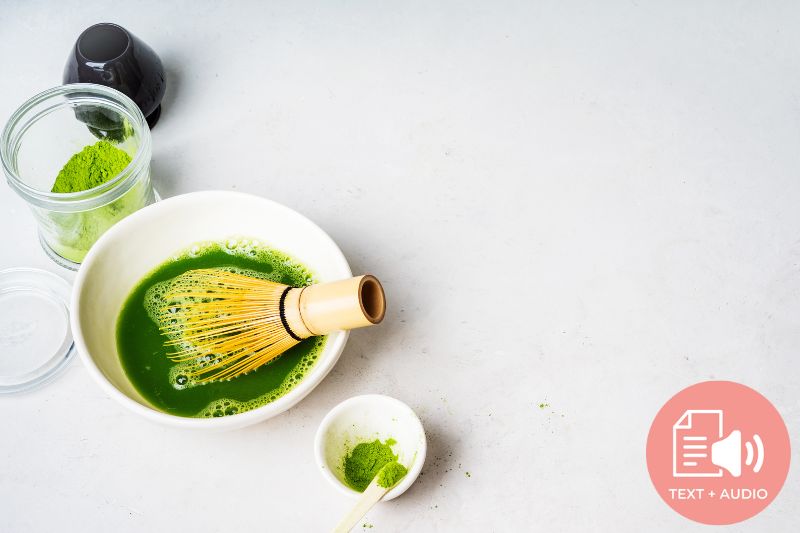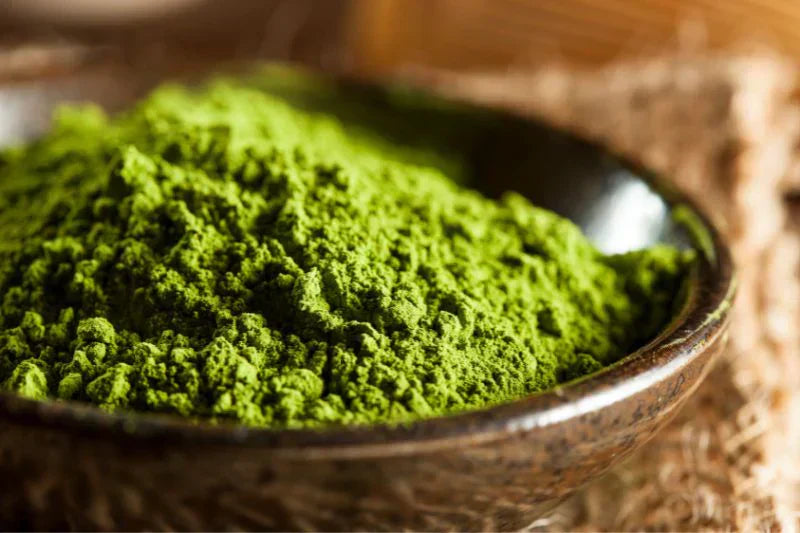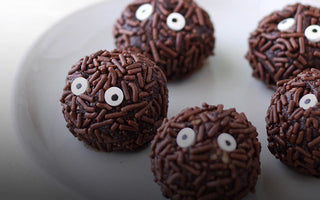We are happy to announce that we have switched our most popular matcha product from a tin can to a paper tube. Here is what the new paper version looks like—aren’t they looking great?
As you know, the creation of packages goes through months of designing, prototyping, and production. These packages are 100% made in Japan with Washi paper technology and are very eco-friendly. Since we started this process, I have been researching how Tin cans are bad for the environment, so I thought of sharing what I found out here in this blog post.

I hope you enjoy it, and hopefully it can be a bit eye-opening for you (which it was for me!).
Many people have always had the idea that tin tea cans are environmentally friendly. They are both easily reusable and recyclable, so this must mean that they're not harmful to the planet, right? That's not the complete story, however.
To see just what kind of impact a material has on the environment, you have to go all the way back to its production.
What is a tin can?
Before we get to the nitty-gritty of production, it's important to point out a particular detail to avoid any confusion going forward.
The phrase "tin can" suggests that the can is made of tin. Unfortunately, this is not always accurate.
If you're familiar with the periodic table, you know that tin (Sn, atomic number 50) is a chemical element, a silver-colored metal that is soft enough to be bent by hand or cut with little force. While that sounds about right, "tin cans" aren't quite what the phrase denotes.
In reality, your present-day tin can's composition is pretty contrary to its name. At times, it contains no tin at all. Although tin, the metal, isn't considered precious like gold, it's still quite rare. That's one reason why the tin cans we know of today are generally made of aluminum and other treated metals.
Why call it a tin can?
Cans were first introduced in the 1800s. Back then, they were made of wrought iron. Later on, their preferred material became tin-plated steel, which combined the durability and lower price of steel with the corrosion-resistant properties of tin.

Tin cans became popular during the First World War due to the high demand for preserved food. Since then, the term "tin can" has stuck around even after innovations led to tin cans no longer being made of tin. Because aluminum shares tin's malleability and resistance to corrosion, it has become the most common replacement.
Where does tin come from?
Some tin cans may have zero tin in them, but all tin cans have metals that must be procured for their production.
Before manufacturing tin cans, you first have to mine the mineral that would serve as their primary material. As it happens, actual tin cans with tin in them are typically made from mined cassiterite (tinstone). At times, stannite is also used. What are these two?
Cassiterite is a tin oxide mineral. As a rock, it's opaque, but in thinner crystal form, it's translucent and makes a pretty desirable gem. It has always been the most important source of tin throughout history. Stannite, on the other hand, is a metallic mineral consisting of a sulfide of copper, iron, and tin.
For tin-less cans, other metals are involved, but mining is still necessary. In the case of aluminum, for instance, the process starts with mining bauxite ore.
Mining is obviously not an environmentally friendly endeavor. Not only does it disturb the natural structure of the land bodies involved, but it also often leads to habitat loss for local flora and fauna. In addition, it can also damage the natural drainage system of the area and cause soil erosion, which could lead to disasters like landslides.

Mining can also contaminate groundwater, which could end up killing plants and animals. The toxicity can also reach humans in some way, even if they don't live in the area.
These metals have byproducts as well. For example, tin contains rare radioactive earth elements like monazite, pyrochlore, and xenotime. Meanwhile, red mud, or bauxite residue, is a byproduct of aluminum. Its alkalinity and other components are hazardous to the environment and can cause a genotoxic effect on fauna.
What is smelting?
Once the desired ores are mined, they are smelted to extract the actual metal needed for producing the cans. This process requires baking at high temperatures, which, as expected, consumes much energy. Not only does it take up a lot of energy, but it also causes air pollution through its emissions.
Are tin and other tin can materials sustainable?
Tin can production is certainly not eco-friendly. With the pollution and damage it causes, it is far from a sustainable practice.
Nonetheless, there are still other considerations when evaluating their impact on the planet. For instance, there's the fact that metal is not a renewable resource. You could only mine so much tin or aluminum before it ran out. At the moment, large amounts of tin have already been mined and used.
Meanwhile, the damage their production has wreaked on nature remains. There's no way to return those lands to their unexploited state. Even when restored or reforested, they've already lost so much that cannot be replaced.
Another point to ponder is the fact that, while metal is recyclable, the process involved is not at all carbon neutral. This is an important consideration to keep in mind as well. This knowledge could better guide people on what to do with their scrap tin or whether to get products packaged in tin cans or not.

Are tin cans biodegradable?
They're not considered biodegradable because it would take at least half a century for the material to break down. In nature, it would sit as garbage for a long time. There are studies focused on developing more biodegradable tin and other metals, but in the context of their use as surgical implants, not as product packaging.
Are tin cans the lesser evil?
Tin cans have been marketed as the better packaging option, but this is clearly relative. If the other option is plastic, then tin cans are definitely more eco-friendly, but this is mainly because plastic is obviously the wrong choice. How so?
- Tin can be recycled over and over without its quality being diminished, while recyclable plastic can only be recycled once or twice before it can no longer be reused. This means that plastic piles up in landfills at a much more alarming rate.
- It's even worse when plastic doesn't end up in landfills but in the water. It does multiple grave damages to marine life, including coral bleaching, microplastic consumption, etc. Make no mistake, though; tin also causes harmful disturbance to the aquatic ecosystem as it is toxic to microorganisms like phytoplankton, an essential link in the aquatic food chain.
- The plastic industry emits almost double the carbon dioxide equivalent that the metal industry does, so comparatively, metal is the more environmentally friendly option.
What is a good alternative to tin cans?
Since tin cans are the lesser of two evils, it's best to go for something that's genuinely more eco-friendly.
For liquid or wet products, glass jars offer a more sustainable replacement. They can also be reused and recycled infinitely without diminishing in quality. Even better, glass is made from sand, a renewable resource. When it breaks down, it stays stable and safe, releasing no harmful chemicals. Consumers don't have to worry about the material leaching into the product either, provided the glass isn't enameled or decorated with print.
Glass production is also a sustainable process. Since the materials used are abundant and easily accessible, producing glass does not disturb the natural environment.

For dry products such as tea, paper is the recommended substitute. It may be reusable, depending on how intact it remains; it's definitely not as sturdy as metal. On the other hand, it's more easily recyclable. It can be recycled without relying on chemical reactions, so recycling paper leaves a far smaller carbon footprint than recycling tin cans. It is also very biodegradable, assuming, of course, that it was not laminated or coated with resin.
Meanwhile, it has fortunately reached a point in history when paper manufacturing can be a fully sustainable and ecological practice. After all, it uses renewable materials to produce a circular product. There's no need to denude forests. Paper can be made with grass, bamboo, and other abundant resources. Popular these days as well is the use of recycled paper.
There are indeed many ways to employ green packaging with paper. This is why we changed our matcha package to paper now.
Final Thoughts
It may feel good to place used tin tea cans in the recycling bin or reuse them as planters or containers, but it doesn't necessarily make them the green option.
It's vital to see the bigger picture, including the impact of their production on the planet. If it uses a non-renewable product and causes harm during production, it's not eco-friendly at all. That means it's time to replace tin tea cans as much as possible with a more sustainable but just as effective alternative, an old, good technology humans invented a long time ago: paper.
Get Free Bonus Books

Sign up for free to the Green Tea Club to get advice and exclusive articles about how to choose Japanese Tea, and tips, tricks, and recipes for enjoying Japanese tea.
About the author
Kei Nishida
Author, CEO Dream of Japan
Certification: PMP, BS in Computer Science
Education: Western Washington University
Kei Nishida is a passionate Japanese green tea connoisseur, writer, and the founder and CEO of Japanese Green Tea Co., a Dream of Japan Company.
Driven by a deep desire to share the rich flavors of his homeland, he established the only company that sources premium tea grown in nutrient-rich sugarcane soil—earning multiple Global Tea Champion awards.
Expanding his mission of introducing Japan’s finest to the world, Kei pioneered the launch of the first-ever Sumiyaki charcoal-roasted coffee through Japanese Coffee Co. He also brought the artistry of traditional Japanese craftsmanship to the global market by making katana-style handmade knives—crafted by a renowned katana maker—available outside Japan for the first time through Japanese Knife Co.
Kei’s journey continues as he uncovers and shares Japan’s hidden treasures with the world.
Learn more about Kei







